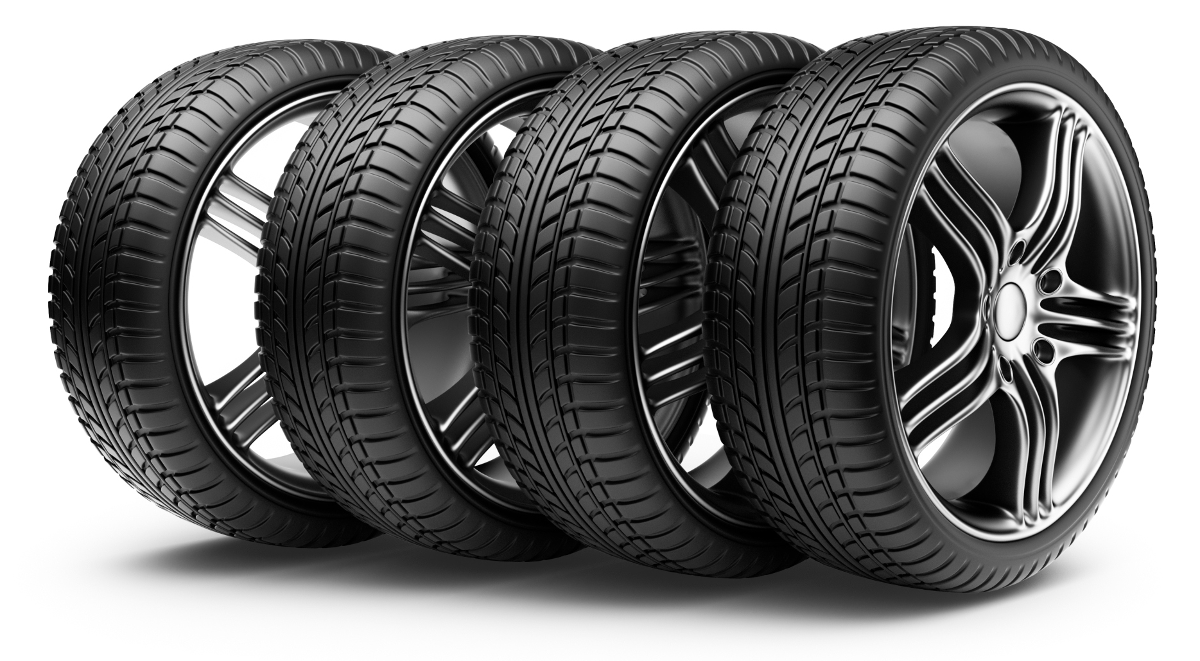
Article by
Ever wondered, why tires are black? Tires have two main ingredients, first is rubber in its raw form. Natural rubber is viscous with an almost white milky quality to it. To prepare it for tire production, it’s mixed with acids to allow it to solidify and pressed to squeeze out the excess water within. Once the rubber is ready for use, that’s when carbon black is added and the color of the rubber turns to its signature black. Carbon black is a fine black powder, or soot, a byproduct of fossil fuels that undergo incomplete combustion. It’s blended with silica and other chemicals, such as a reinforcing filler to enhance rubber’s strength and durability while also conducting heat away from parts of the tire. But manufacturers today also add a number of other compounds to the mixture. In fact, up to 200 different ingredients go into a tire. Synthetic rubber polymers such as butadiene, styrene-butadiene and halobutyl rubber are combined with the natural rubber.
As many as 30 different types of synthetic rubber may be used and the properties of the polymers and chemical agents used in a tire can have a significant impact on its overall performance including its impermeability, rolling resistance and traction. All of the ingredients are mixed together to create a black gummy compound. This is cooled and cut into strips. The next step is to build the tire. This is done from the inside out. All of the elements including the rubber, steel reinforcement belts, beads, ply and other components are placed in a tire building machine. The resulting tire is then vulcanized in a curing machine. In this process the tire is heated together with sulfur, an accelerator and an activator and all of the parts of the tire are compressed together. The tire is hardened and given its final shape including its tread pattern and sidewall markings.
These days manufacturers control the properties of their tires so much that they sometimes use as little as 10% of natural rubber in their tire recipes. Instead, they rely mostly on synthetic compounds and fillers to create tires that are strong and built to last. Without carbon black tires would be a lot more brittle, give out much earlier and be more susceptible to damage from sunlight. Aside from that our tires would look very different. They would be white!
But what if you want a tire in a different color? Then you may want to fit your car with BFGoodrich’s Scorcher T/A tires. They featured colored ribs and unique silica-reinforced treads. They supposedly perform about the same as any regular high-quality tire even outperforming them in some areas such as grip. Pirelli: known throughout the Formula 1 circuit also offers some tire options with colored sidewalls in their inventories. But that’s about as far as you can go if you want to change up the color of your tires. We can’t say they’re practical either as they typically don’t last as long as their plain black counterparts are more expansive and are quicker to show dirt and wear. That would defeat the whole point of even getting them installed in the first place.
Cars have come a long way since the Model T Engines have gotten beefier, chassis have gotten sturdier and have more safety features. Even steering wheels are starting to change. But despite the leaps forward in tire construction such as the introduction of sidewalls, improved tread construction and innovations in material engineering. As a whole, tires still largely look the same. They are round, and black, just like they’ve always been throughout the automobile industry’s century-long history. But what would future tires look like?
Michelin, one of the largest tire manufacturers in the world, has a design that just might be the tire industry’s biggest step forward. UPTIS, short for the Unique Puncture-Proof Tire System, could be the 3D-printed airless tire of tomorrow. Michelin firmly believes in the concept, touting it as a truly modular and ‘rechargeable’ tire. Uptis is principally made of rubber and resin-embedded fiberglass to carry the load of the car and maintain a smooth ride without issues caused by compression. And thanks to its airless design you can say goodbye to flat tires. Instead, you can roll up to a 3D printer, to ‘refresh’ your treads or even modify them if you’re planning to go on a road trip on harsh terrain.
There have been some problems to overcome before airless tires can hit the road at scale. For example, if debris, sand, mud or snow is trapped in the spokes, the airless tires can fail. Problems like this explain why they’re still under-development. For now, we can take comfort in our same old reliable tires, as black and circular as they are. But would you prefer to fit your car with airless tires or traditional tires?
 Monthly "Azeem English Magazine", launched in 2000, records the information about diverse fields like mental health, literature, research, science, and art. The magazine's objective is to impart social, cultural, and literary values to society.
Monthly "Azeem English Magazine", launched in 2000, records the information about diverse fields like mental health, literature, research, science, and art. The magazine's objective is to impart social, cultural, and literary values to society.
+92 51 88 93 092
First Floor, RAS Arcade, Eidhi Market, Street#124, G-13/4, Islamabad, Pakistan, 44000.